Junkers "back to front." Ju-287
The development of the aerodynamic appearance of the new machine was entrusted to the aerodynamic department of “Junkers” under the leadership of Hans Vokke. Requirements for speed forced to apply a special approach to the aerodynamics of the aircraft. However, the fuselage was able to do without special research. The tail and the wing caused much difficulty. The required high speed of flight forced the designers to use the swept wing. Due to the peculiarities of the flow, it increased theoretically possible flight speeds. At the same time, the sweep optimum for such speed noticeably spoiled the takeoff and landing characteristics of the aircraft. Therefore, after the long disputes, the engineers of “Junkers” decided to apply one idea that had long been in the air, but could not find practical application. They decided to use the backward-swept wing. German aerodynamic scientists already knew the advantages of such a wing. Due to the specific runoff of the flow along the wing, not outward, but inward to the fuselage, it has a greater lifting force than the straight sweep wing of the same span, area, etc. At the same time, the aerodynamic quality improves and, as a result, maneuverability increases.
It was made several models of the future aircraft with KOS. According to the results of dozens of blowdowns in wind tunnels, sweep at -23 ° was recognized as optimal. It simultaneously gave a good gain of characteristics and did not complicate the design. However, studies have shown that an airplane with a backward-swept wing can fly only if a certain range of angles of attack is observed. When going beyond it, the wing was subject to divergence - the console began to literally twist. In the absence of timely measures, the wing collapsed. In this regard, already at the stage of purging recommendations for acceptable flight regimes were developed. Since at first it was necessary to work out the wing created in practice and only then engage in the creation of a combat aircraft, it was decided to build a kind of “mixture” of a prototype and a flying laboratory. To do this, they took the fuselage from the aircraft He-177 and tail from the Ju-188 bomber. With a wing for this flying miracle I had to suffer. The fact is that in the design of the developed wing of sufficient rigidity there was simply no place for cleaning the chassis. Therefore, the landing gear of the prototype had to be done non-retractable. The nose strut was borrowed from the captured American B-24 Liberator, and the main ones were reworked units from the Ju-52 transporter. All wheels were covered with skirts like Ju-87 laptes. Four turbojet Jumo-004 engines had to be placed, as they say, where was the place. Two managed to install under the wing, and the other two attached to the nose of the fuselage. All work on the alteration of existing equipment in the flying laboratory with the index Ju-287V1 was carried out in the spring and early summer of the 1944 year.
In August of the same year, test pilot Z. Holzbauer for the first time raised the Ju-287V1 into the air. Takeoff was not easy. The normal take-off weight of the aircraft fluctuated around the twenty-ton mark. With four engines 800-900 kgf thrust each take-off of such a machine turned into a long and difficult event. Therefore, in the very first flight, under the wing nacelles Ju-287V1, the liquid Walter HVK109-502 accelerator (500 kgf) was suspended. Even with an extra ton of thrust, the aircraft accelerated for a rather long time along the runway and did not want to take off into the air. Nevertheless, gaining the necessary speed, he went up even faster than his fellows with a straight sweep wing. According to Holzbauer, the new wing gave the Ju-287V1 remarkable roll handling. Another surprise was waiting for the pilot before landing. Released flaps almost did not affect the course of the decline. The specific load on the Ju-287V1 wing exceeded 300 kilograms per square meter. Despite this, the plane acted confidently during landing approach at a speed of about 240 km / h and did not show any tendency to stall. The touch was made at a speed of the order of 180-190 km / h.
The first flight was intended for the initial study of the characteristics of the aircraft with KOS. Starting from the second, Ju-287V1 received a whole set of research equipment - recorders, etc. Also, the entire surface of the wings was covered with silks (small threads fixed to the plane at one end), and in the fuselage, between the wing and the tail, they placed a movie camera and a transparent fairing for it. With the help of these things, Junkers engineers and aerodynamics gathered visual information about the flow characteristics of the surfaces of the revolutionary wing. During the first 17 test flights, the Ju-287V1 managed to get enough information to improve the design. It turned out that when performing deep turns, as well as at the exit from a dive, the elevators and directions began to lose their effectiveness. Thanks to the silk trees and the movie camera, it was possible to establish the reason for this: the tail plumage along with the rudders turned out to be in the satellite wake of the wing. However, this problem was not observed in all ranges of angles of attack. The reduction in the efficiency of the rudders was eventually recognized as one of the ways to control the angle of attack - as soon as the maneuvers begin to go tight, the plane must be leveled, otherwise divergence will soon begin and the wing will collapse right in flight. The second drawback of the Ju-287V1 lay in the engine layout. As it turned out, the two engines in the nose of the fuselage not only increased the overall thrust, but also created a moment for cabrirovanie. In order to avoid damage to the wing and fuselage by the jet stream from the front engines, the latter were placed with a slight collapse outward and at an angle to the horizontal. This saved the design from overheating, but complicated the longitudinal balancing, and also provoked the rise of the nose and an increase in the angle of attack. At the same time, it is impossible not to admit that even with all its shortcomings and the fixed non-removable chassis, the first prototype Ju-287 still managed to conquer the speed limit in 650 km / h. A good result for a machine designed for research flights at low speeds.
For full-fledged tests in the entire allowable speed range in the summer of the 44, a second prototype was built under the name Ju-287V2. Unlike the aircraft V1, the second copy was a completely new design. Because of this, for example, managed to make a full retractable chassis. Yes, and externally, the new aircraft looked much better than its predecessor. True, a good exterior of the new car was “compensated” by its difficult fate. Glider Ju-287V2 was made pretty quickly. But then there was a snag with the engines. Theoretically, on the Ju-287V2 you could put anything - from BMW-003 to HeS-011. The scatter in the power of the "applicants" was just as great. It would seem, choose the best, powerful and convenient engine, but put on the plane. Only in the courtyard was the second half of 44 of the year, and the Allies had long been actively bombing factories in Germany. The question of choosing the engine for the Ju-287V2 was complicated by the shortage and low production rates. Due to the insufficient thrust of the Jumo-004 engines, it was decided to equip the Ju-287V2 with two Jumo-012 motors with a load of 3000 kgf each. They decided to put them only under the wing. But here the shortage affected - problems with engine development along with production difficulties forced the Junkers to abandon the Yumo-012 engines. The second contender for the title of the power plant of the new aircraft was the engine HeS-011. With sufficient simplicity and low cost, this engine had less traction - just 1300 kgf. Therefore, we had to return to the four-engine scheme with the placement of the engines under the wing and in the forward fuselage. At the same time more powerful than Jumo-004 engines gave more noise. But in view of the military purpose of the Ju-287, the loud work was considered tolerable and tolerable for combatant pilots. The variant of reworking the design of the aircraft for new engines was already ready, as the bad news came from subcontractors. Engines from the "Heinkel", too, could not wait. Only BMW-003 and Jumo-004 remained. Their power was even less, so for a normal thrust-weight ratio on the Ju-287V2 it was necessary to install six engines already. Add two extra engine was not easy. At first, it was proposed to install two engine nacelles under the wing (three engines in each), but then they decided to leave everything as it was, and put additional engines under the wing next to the existing ones.
Ju-287V2 in addition to six engines received a large bomb bay with a length of 4,6 meters. In addition to the large volume, it had good practical capacity: up to four tons of bombs without much damage to the alignment of the aircraft. This was achieved by the location of the cargo compartment near the center of gravity of the entire structure. Also, the possibility of suspension of bomb weapons required to increase the crew from two to three people. Tests of the Ju-287V2 were scheduled for the fall of 1944. From the factory in Dessau, the car was delivered to the Brandis airfield, where flights were supposed to be carried out. However, a few days before their start, in the month of October, from the Reichsministery aviation an order came to stop all work on the Ju-287. Germany now needed not fighter bombers, but fighters. However, just a few months later - at the beginning of the 45th - a new order came just as suddenly. The views of the military leaders changed and they demanded that large-scale production of a new high-speed bomber be prepared. True, the production was never started. The only instance of the Ju-287V2 flew around in Brandis, after which it was necessary to remove the engines for installation on more current equipment. Hoping for further work, the testers “masked” the Ju-287V2: they transported it to the edge of the forest near the airfield and put its tail to the airfield. In this way, it was possible not only to save the only Ju-287 version V2, but also to confuse the enemy. An American reconnaissance aircraft was able to photograph the Brandis airfield and its immediate surroundings, but when analyzing the image, the Americans decided that this was some kind of an experimental duck-type aircraft with a swept wing of direct sweep.
In the last months of the war, German engineers managed to develop a modification Ju-287V3. It was distinguished from previous aircraft by a hermetic cockpit, a gun mount in the rear section (two MG-13 131-mm machine guns) and a number of minor changes. Otherwise, it was the same Ju-287V2. By the time the US forces took the plant in the city of Dessau, Ju-287V3 was at the assembly stage. During the battle for the city seriously hurt shop, which was unfinished bomber. It is noteworthy that the plane itself received minor damage, but did not interest the Americans. However, over time, a commission of US engineers carefully studied both Ju-287V2 and Ju-287V3, which they received as trophies. After the American troops left Dessau and Brandis and left the city under the responsibility of the USSR, Soviet engineers arrived at the plant. The noticeably damaged Ju-287V2 from Brandis airfield was repaired and sent to LII. In 1947, the recovered aircraft was flown over by German and Soviet pilots. During the test flights, the advantages of the design were confirmed, but, according to the staff of the Flight Research Institute, all the advantages of the backward-swept wing were fully compensated for by the complexity of the design and limitations in piloting.
On the materials of the sites:
http://airwar.ru/
http://airpages.ru/
http://warbirdsresourcegroup.org/
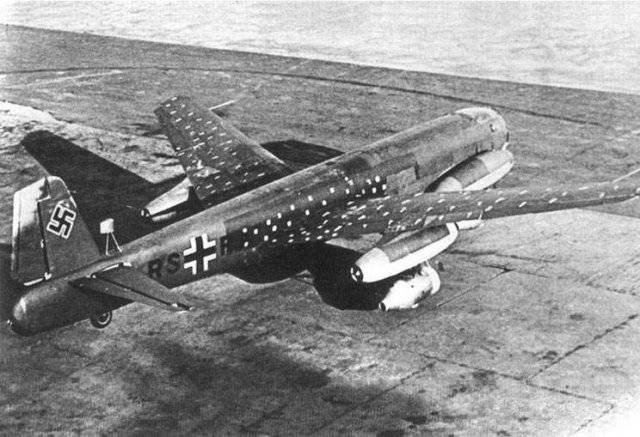
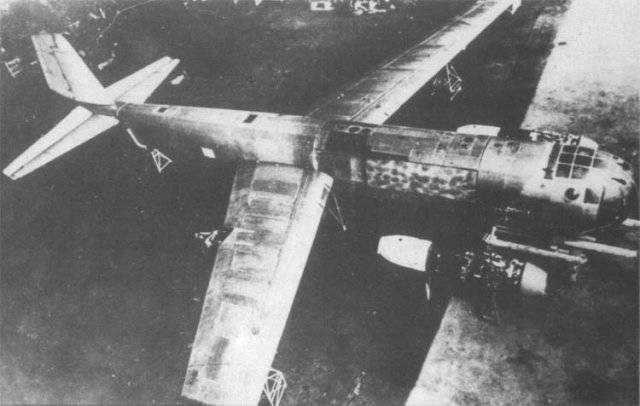
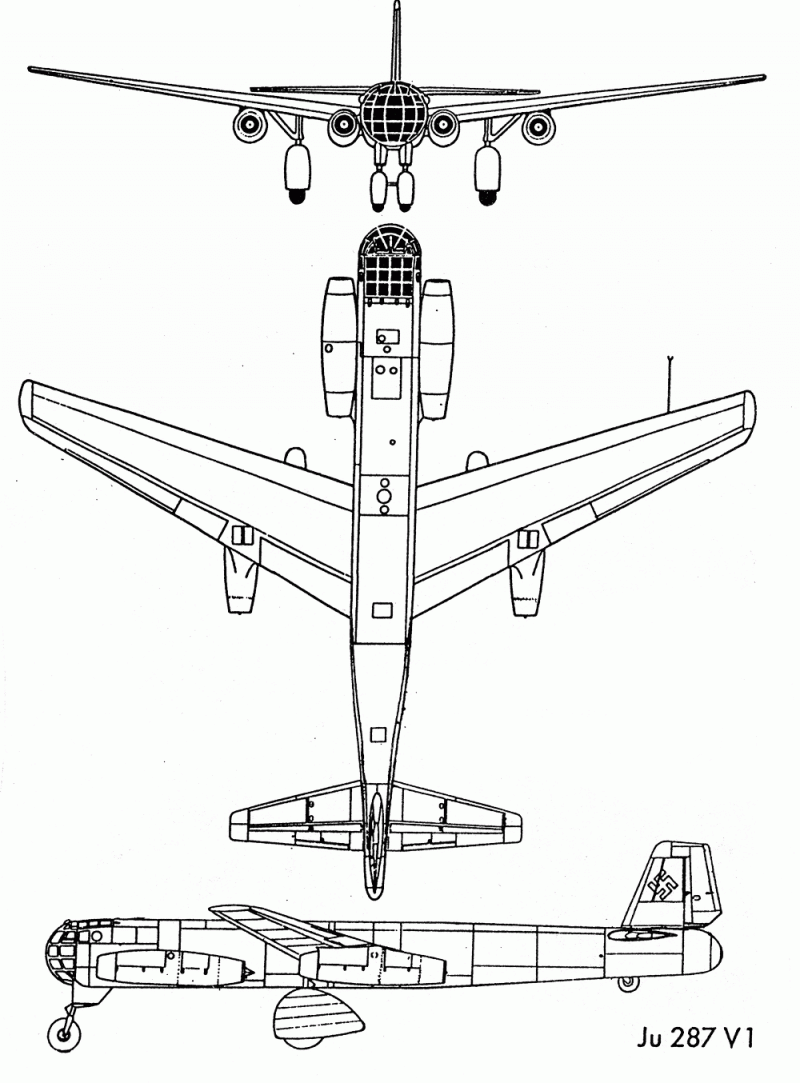
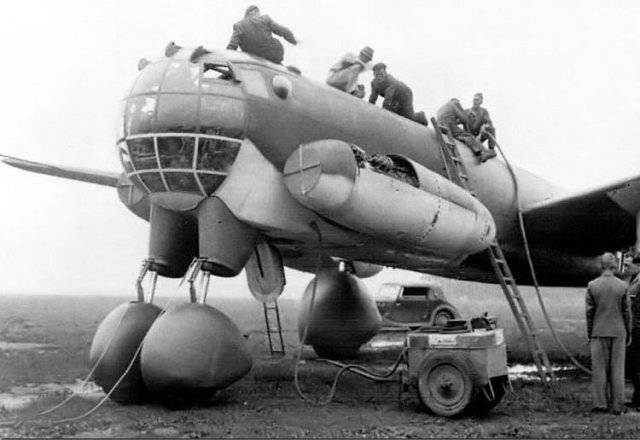
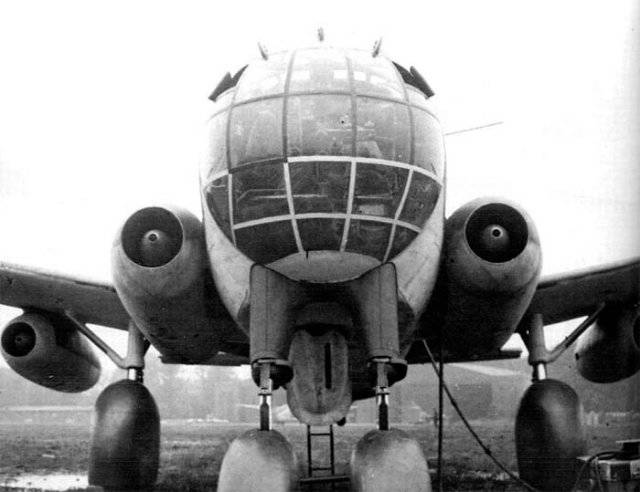
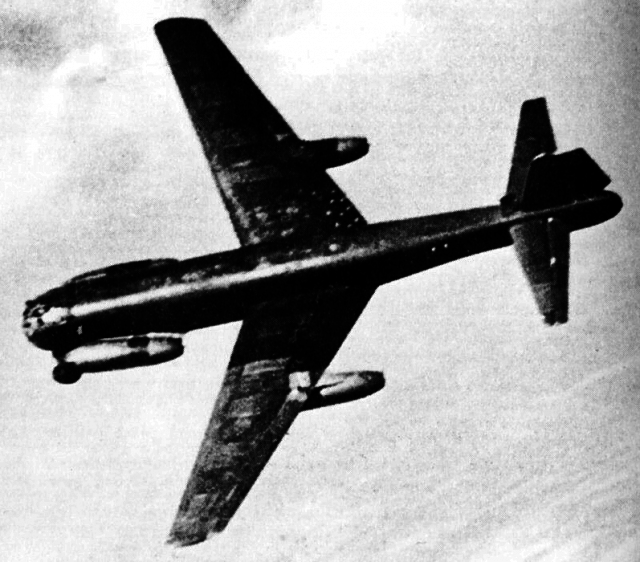
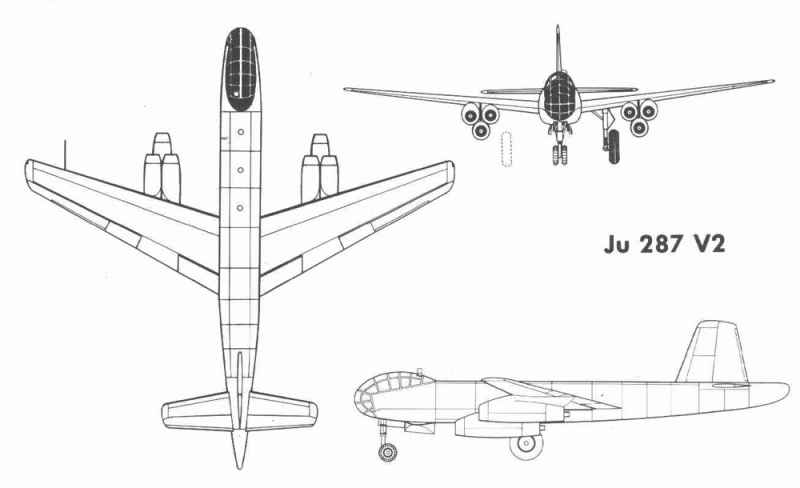
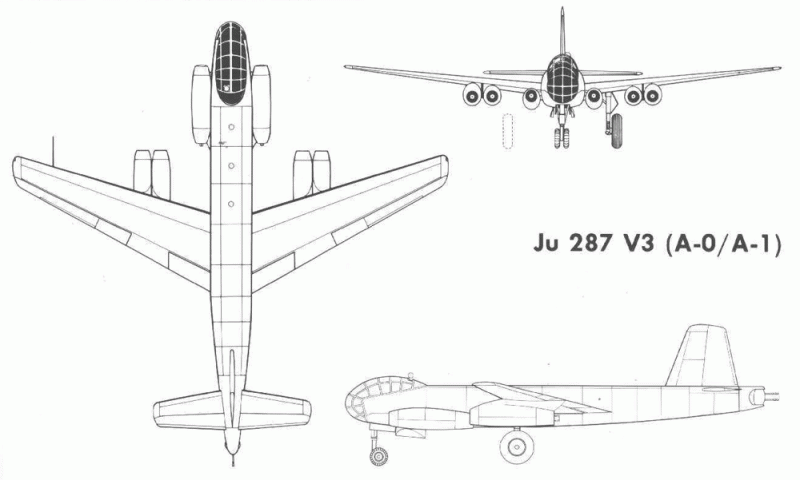
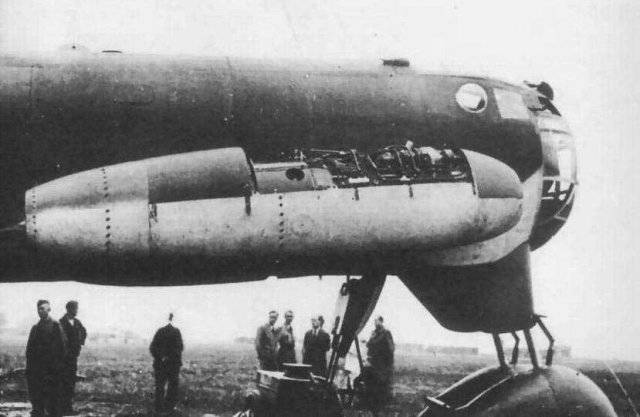
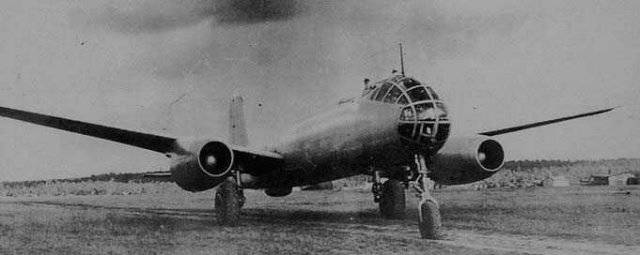
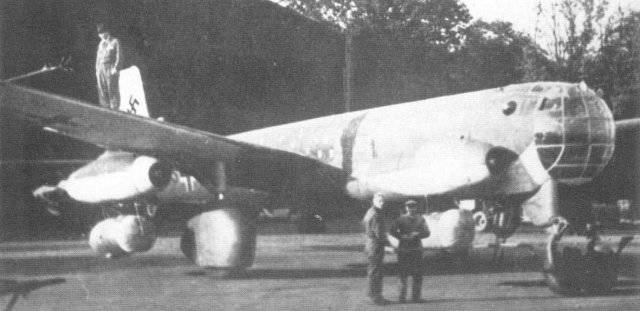
Information